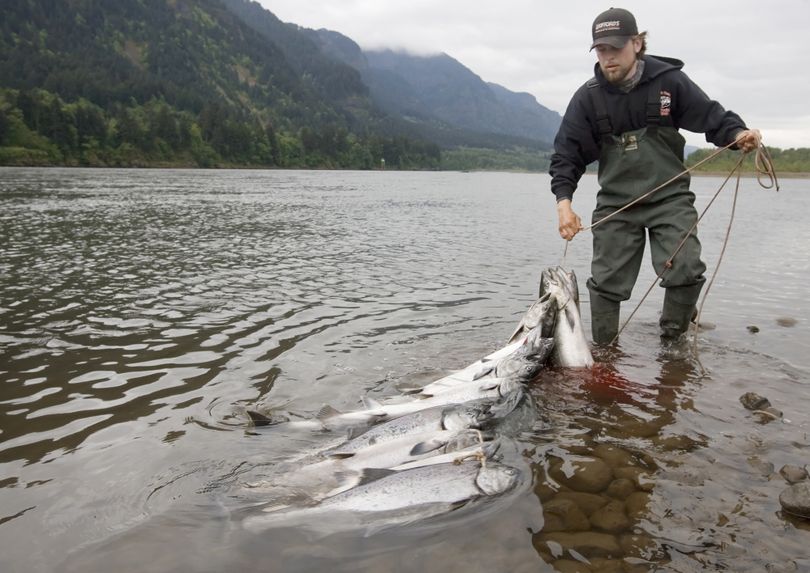Barbless hooks required Jan. 1 on much of Columbia River

FISHING -- Starting New Year’s Day, anglers will be required to use barbless hooks until further notice when fishing for salmon, steelhead and cutthroat on a large section of the Columbia River.
The rule will affect sport fisheries from the mouth of the Columbia River – including the north jetty – upstream to the state border with Oregon, 17 miles upstream from McNary Dam, the Washington Department of Fish and Wildlife says.
Under the new rule, anglers may still use single-point, double-point, or treble hooks in those waters, so long as any barbs have been filed off or pinched down.
The Washington Fish and Wildlife Commission, which sets policy for WDFW, is scheduled to take action next month on the new draft policy that includes a ban on barbed hooks and a variety of other management changes.
State fishery managers said the immediate need for the rule is to make Washington’s fishing regulations consistent with those in Oregon, where that state’s fish and wildlife commission recently approved a broad-based measure that prohibits Oregonian license holders from using barbed hooks on the Columbia River starting Jan. 1.
Read on for more information from the WDFW:
“Fisheries can be very difficult to manage under two different sets of rules,” said Guy Norman, WDFW southwest region director. “The two states have worked together for nearly a hundred years to maintain regulatory consistency on the river that serves as a common boundary.”
In recent months, both states have been discussing a ban on barbed hooks as part of broad-based policy to restructure Columbia River fisheries to promote the recovery of wild salmon and steelhead. As a conservation tool, barbless hooks are easier to remove than barbed hooks, reducing the likelihood of killing or injuring the fish, Norman said.
“That’s especially important on the Columbia River, where anglers are required to release fish from a number of protected runs unharmed,” he said.
The Washington Fish and Wildlife Commission, which sets policy for WDFW, is scheduled to take action next month on the new draft policy that includes a ban on barbed hooks and a variety of other management changes.
A vote on the draft policy, which also includes phasing out the use of gillnets by non-tribal fishers in the mainstem Columbia River by 2017, is scheduled Jan. 12 during a public meeting in Olympia.
